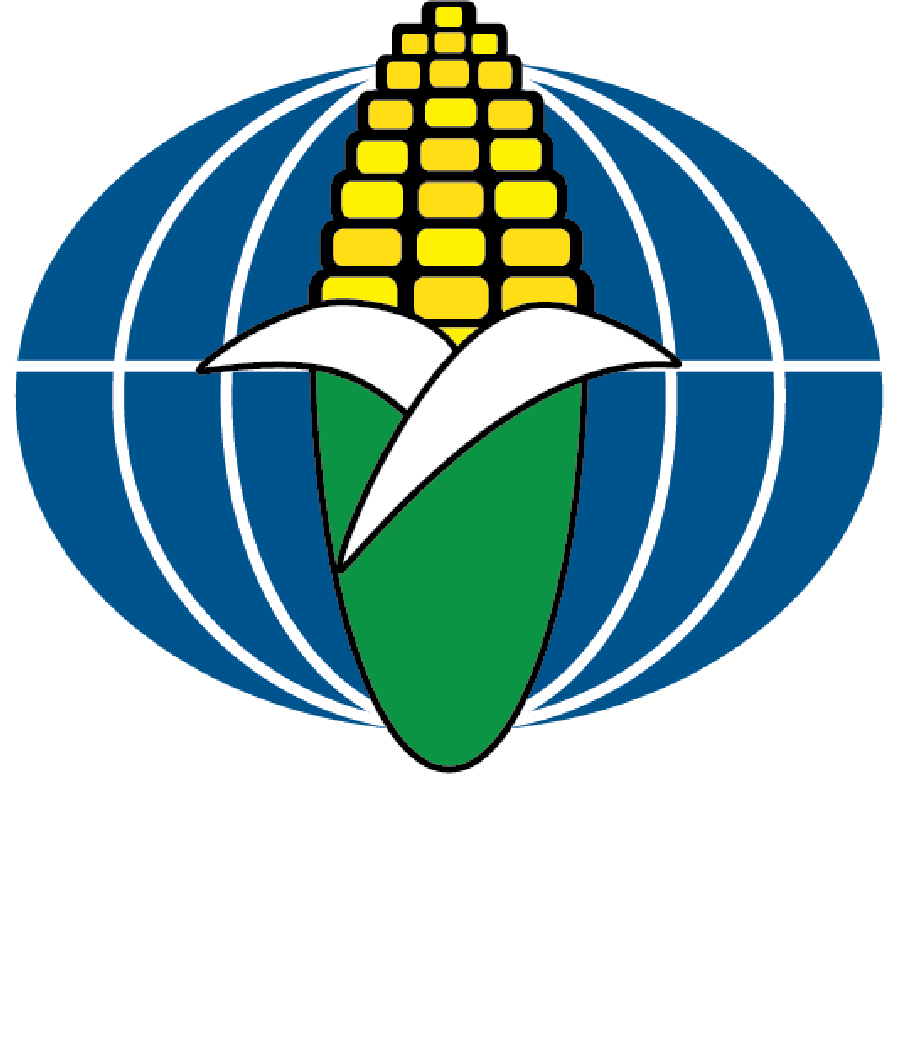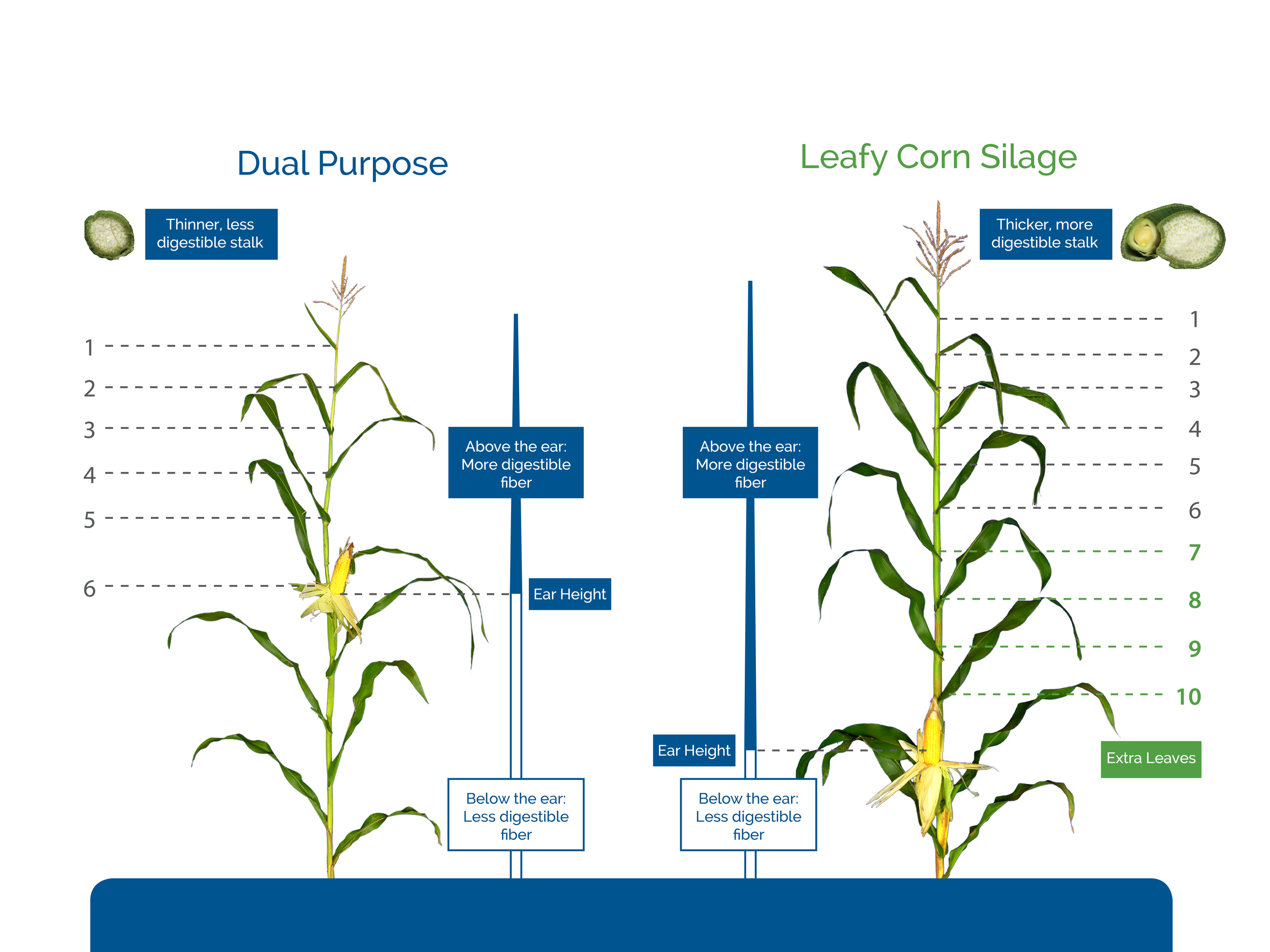On many dairies, corn silage is the most important and costly component of feed. The harvest of a single corn hybrid can make up to 60% of the feed for a herd for the entire year. The quality of this corn silage affects herd health, milk yields, the cost of feed additives and ultimately the dairy’s bottom line, so there’s a lot riding on its success. It is with this in mind that I am responding to the article written in the April 2017 issue of Progressive Dairyman, “Silage populations: Higher or lower?”, by Dupont Pioneer’s Martina Pfister.
As a corn silage customer, it is important for you to note that Pioneer promotes their existing grain-bred corn hybrids for use as silage. They invest in the testing and promotion of these grain hybrids rather than in the more costly development of a silage-specific line-up. They also breed their hybrids for high populations – not just for you to enjoy improved yield, but also for their increased seed sales. In this article, it seems that Pfister recommends planting your silage crop at a high population of 40-42,000 ppa depending on environment. She also favors the pursuit of grain quantity (which is something that a grain-bred hybrid is designed for), over feed quality and silage crop security (characteristics that are not considered during grain breeding). She sums-up her recommendations by saying “…planting at higher rates and harvesting the crop at...three-quarter milkline maturity will produce corn silage high in starch and yet will not be detrimental to fiber quality.” This advice neglects to consider the decline of starch digestibility as the kernel matures, the narrowing of the harvest window as you wait for additional starch deposition and the added damage that will be done to the effective fiber during more aggressive kernel processing. These narrow-sighted recommendations can hurt your bottom line.
While I’m on the topic of bias, I should admit to being the breeder and developer of Leafy and Floury Leafy Corn Silage Hybrids. I have spent more than three decades (and over 70 plant generations) breeding and testing these hybrids to be used exclusively for silage. For this reason, I am compelled to make it clear that despite Pfister’s statement in the article that planting Leafies at a population of 40,000 ppa “showed no significant effect…on fiber digestibility”, it is critical to plant Leafies at a population of 28,000-30,000 ppa for agronomic security and assurance of best feed quality. Additionally, I wish to broaden the conversation around the importance of silage quality in order to help dairy and beef producers harvest, store and feed the best silage possible.
Plant Population and Leafy Corn Silage Hybrids
To maximize yield, it is important to optimize the leaf area index of a corn crop. This can be done in two ways – either by increasing plant population per acre (planting more seeds), or by increasing the leaf area on an individual plant (adding more leaves to the plant). Grain corn hybrids produce a maximum of 5-7 leaves above the ear, so these hybrids must be planted at high populations to maximize their yield potential. The presence of the Leafy Gene allows Leafy Corn Silage Hybrids to have 8-13 leaves above the ear – about 40% more total leaf area per plant than a grain hybrid. When this difference in leaf area is accounted for, planting a Leafy at Pfister’s recommended 40,000 ppa would be like planting a grain hybrid at 56,000 ppa!
For decades, we have studied the effect of plant population on agronomic performance, yield and feed quality as a regular part of our Leafy testing program. We have looked at populations ranging from 26,000 to 35,000 ppa. The results of this research lead me to recommend a maximum plant population of 30,000 ppa for Leafies that are planted on good soils and lower populations for crops that are planted on more drought prone soils. Our experimental findings indicate that in good years, overall yield of the same hybrids at the same locations is very similar between 30,000 and 35,000 ppa, but grain content is always lower at the higher populations. In years with less rainfall in the season, particularly around flowering time, the total plant yield will be lower at 35,000 ppa. At higher populations we can see a decline in fiber digestibility, starch content, drought tolerance and root strength. The cheapest crop insurance you could buy is to plant your Leafy at 28,000 to 30,000 ppa. You will not sacrifice yield, will gain grain content and feed quality, and will spend less on seed.
In her article, Pfister references a population study that Cornell conducted in 2008-2009. The researchers selected two TMF hybrids from Mycogen – TMF2Q716 and TMF2W587. They assumed that these hybrids were Leafies, but unfortunately they were not. Therefore, the study’s conclusion that Leafies perform well at high populations is not valid. I would direct you to a population study done by Greg Roth and Mark Antle at Penn State Extension. They compared a Leafy Corn Silage Hybrid to a dual purpose hybrid and concluded that “this leafy hybrid may have lower optimum populations than normal hybrids. Leafy hybrids may also have lower starch levels and whole plant digestibility at higher plant populations, which would also support the recommendation for reduced plant populations for leafy hybrids.” Also, during a feed study, researchers at the University of Wisconsin harvested a Leafy Corn Silage Hybrid at a low population of 24,000 ppa and at a high population of 32,000 ppa and found that “NDF was highest and starch lowest for LFY at the high plant population.” (Bal et al, 2000).
At Glenn Seed, we include commercial dual purpose checks in our hybrid trials for yield and feed quality comparison. Our research planter can accommodate different plant populations. We test our Leafies at 30,000 ppa and compare them with dual purpose hybrids that are planted at their recommended higher populations. The Leafies that we bring to the marketplace have competitive or superior yields and feed qualities at their lower populations compared with the grain-bred hybrids planted at their higher recommended populations. Unfortunately state trials do not reduce plant population for Leafies when comparing them with dual purpose hybrids.
The Pursuit of Starch Quantity to the Detriment of the Dairy Ration
In her article, Pfister recommends delaying the harvest of Pioneer hybrids until 75% milkline to gain more starch content in the silage. This misguided recommendation favors starch quantity over crop security and feed value, and here’s how:
- Dual purpose hybrids produce kernels that were designed for the commercial grain system. They have been bred to be small, tough, vitreous and fast-drying. As kernels approach maturity, they may increase in test weight, but they also become less digestible as a silage product. While the kernel processor can be tightened down to break-up kernels during chopping, this irreparably damages the effective fiber that is needed to promote normal rumination and increased milk fat production in cows. In an attempt to make these kernels more digestible, the silage can be stored for long periods of time, but dry matter losses will occur and there’s no guarantee that the starch will gain back its lost digestibility.
- In order to promote proper fermentation in the silo, it is essential to harvest the corn silage crop when plant moisture drops to about 65%. If there is inadequate moisture and sugars in the harvested silage, the silage will not pack properly and fermentation will be hindered. This will lead to mold growth and dry matter losses in the silo, and decreased feed value. Dual purpose hybrids have a narrow silage harvest window as it is and it becomes more difficult to chop the silage crop at an appropriate plant moisture when the harvest target shifts from 50% to 75% milkline.
Indeed there will be more starch deposition as kernels approach black layer, but if this starch is less digestible and there is inadequate sugar and moisture to support fermentation, then the silage product will be inferior. You may find yourself spending a small fortune on supplements that are still unable to rescue the feed.
My Advice:
If you grow a dual purpose grain hybrid for your silage crop, do not be blinded by the promise of more yellow in the pile. Harvest it when the total plant moisture is appropriate for fermentation and when you have the best balance between starch content and starch digestibility that this hybrid type can provide – around 50% kernel milkline. If you find that you have a hard time achieving this goal season after season, and are tired of spending so much money on seed, try a Leafy or a Floury Leafy Corn Silage Hybrid. They’re bred for a high total plant yield (and high yield per acre), high starch content, high starch digestibility and a long harvest window – on average double the length of a grain hybrid. They have been bred to have a high sugar content to aide in fermentation and can be fed shortly after ensiling because of their highly available starch. Many dairies find that they are able to reduce the concentrate corn in the ration when they switch to a Leafy or Floury Leafy because of the increased starch digestibility. They also tend to see a bump in milk fat percentage, which we think occurs in part because Leafies can be harvested without the aggressive kernel processing that damages effective fiber. Choosing to plant a Leafy or Floury Leafy will offer silage-specific agronomics, high yields of highly digestible feed and will save you money on seed costs!



